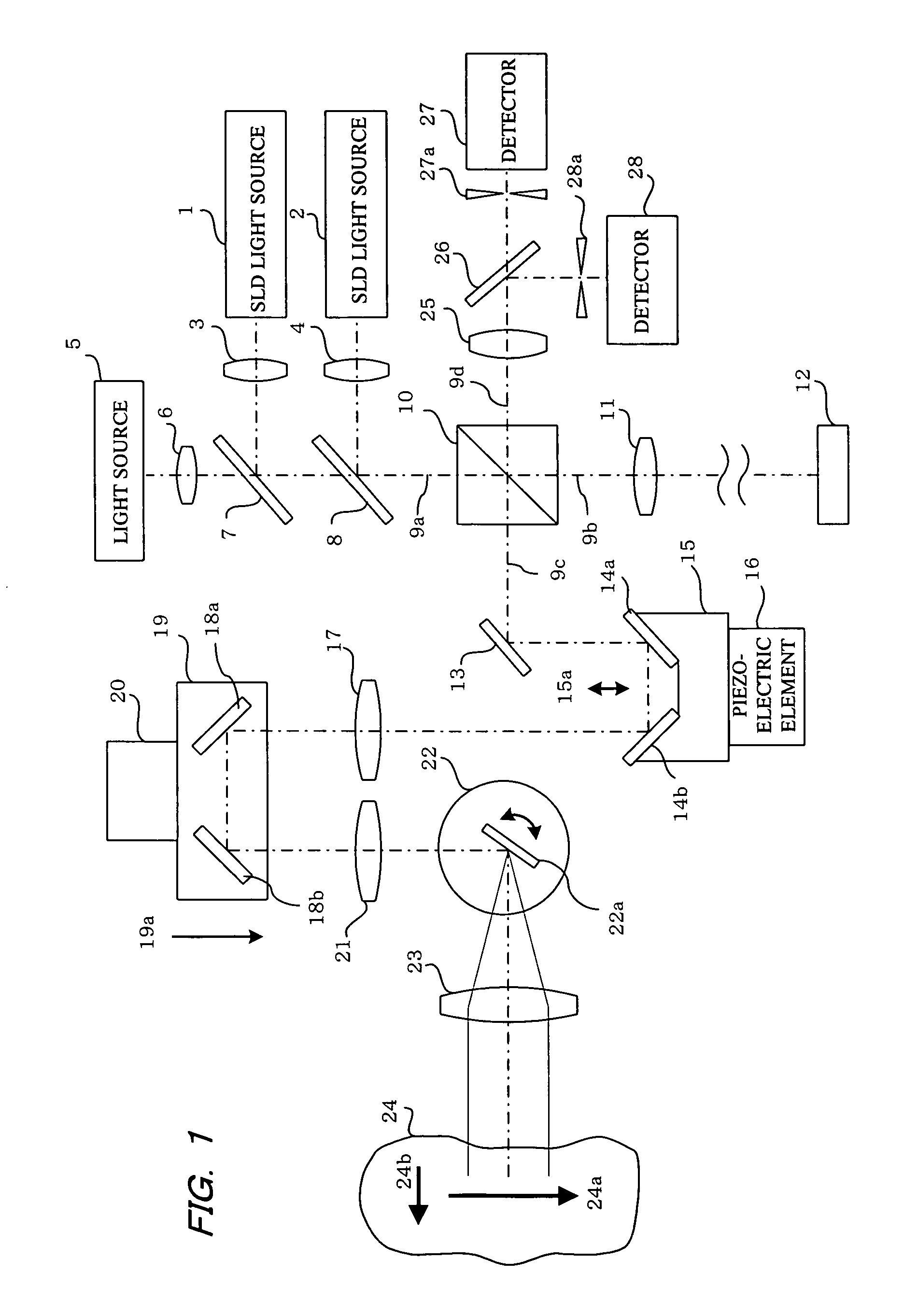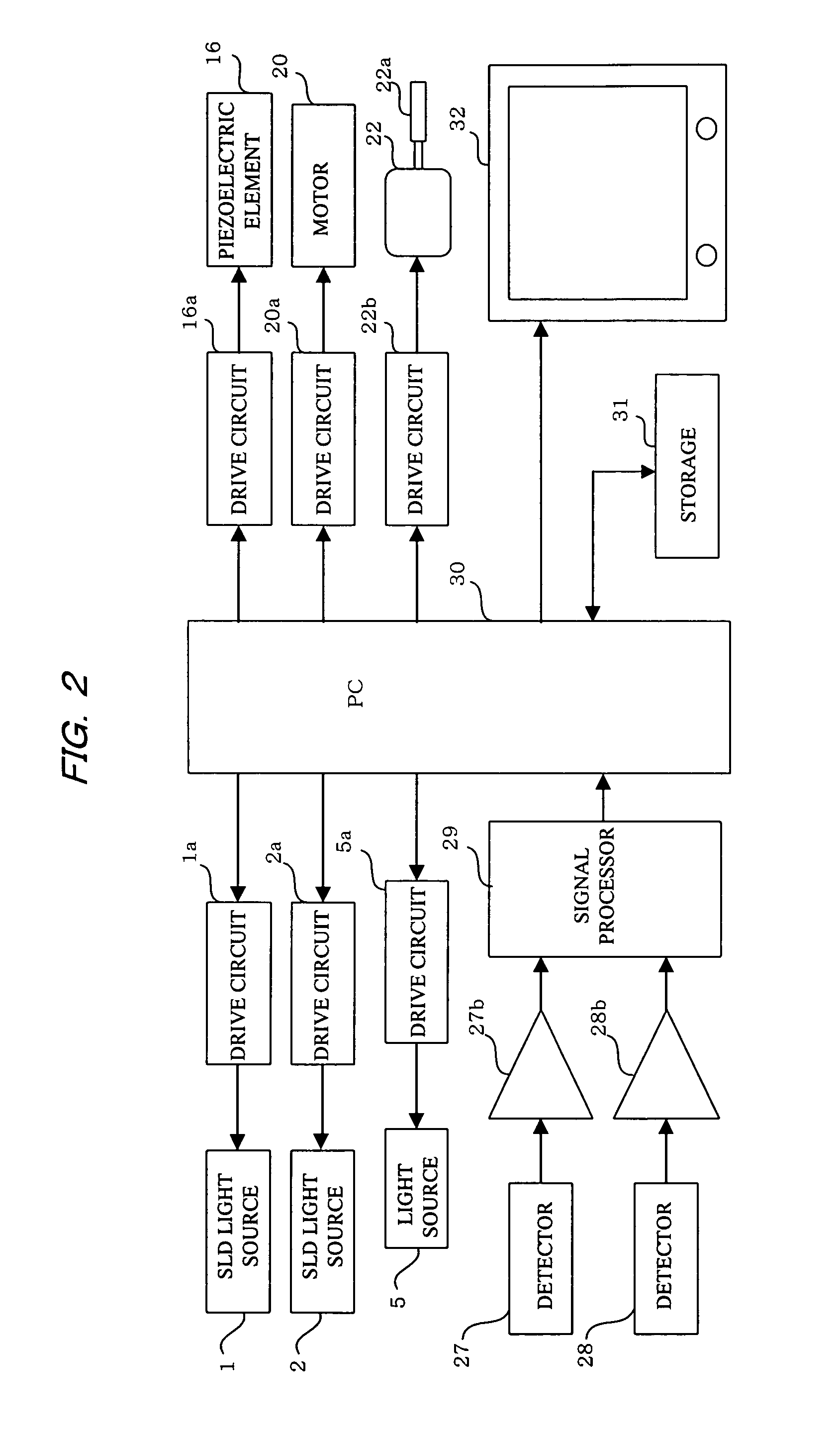Optical tomograph
a tomograph and optical technology, applied in the field of optical tomographs, can solve the problems of difficult to achieve the resolution increase in the depth direction orthogonal to the optical axis, the inability to optimally maintain the focus state of the emitted light directed to the observation object over the entire area of the tomograph, and the inability to adjust the depth direction easily, etc., to achieve the effect of stable characteristics, high resolution and contras
- Summary
- Abstract
- Description
- Claims
- Application Information
AI Technical Summary
Benefits of technology
Problems solved by technology
Method used
Image
Examples
Embodiment Construction
[0031]The invention will now be described in detail with reference to the embodiments shown in the drawings.
[0032]In FIG. 1, the objects indicated by reference numerals 1 and 2 are super luminescent diodes (SLD) for emitting partially coherent light. These diodes are light sources for generating a light beam that has low interference (little interference), which is necessary in observing a tomographic picture. The diodes emit light in different near-infrared (invisible) wavebands having emission wavelengths of, e.g., 1300 nm and 850 nm, respectively, and the light beams emitted from the light sources 1 and 2 are collimated by lenses 3 and 4, respectively.
[0033]In FIG. 1, an additional light source 5 is provided. This light source is a semiconductor laser for emitting red (visible) light having a wavelength of 670 nm, for example. The light source 5 is provided for the sake of convenience in order to verify the optical path of the beams from the invisible-light sources 1 and 2 by usi...
PUM
 Login to View More
Login to View More Abstract
Description
Claims
Application Information
 Login to View More
Login to View More - R&D
- Intellectual Property
- Life Sciences
- Materials
- Tech Scout
- Unparalleled Data Quality
- Higher Quality Content
- 60% Fewer Hallucinations
Browse by: Latest US Patents, China's latest patents, Technical Efficacy Thesaurus, Application Domain, Technology Topic, Popular Technical Reports.
© 2025 PatSnap. All rights reserved.Legal|Privacy policy|Modern Slavery Act Transparency Statement|Sitemap|About US| Contact US: help@patsnap.com



